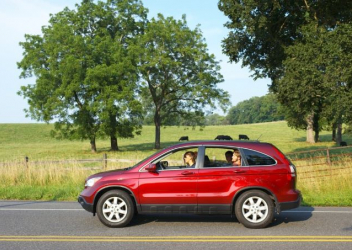Research In Action
Research In Action
Breadcrumb

As a developmental and behavioral pediatrician, I primarily care for children and teens with neurodevelopmental differences, such as ADHD and autism, as well as intellectual disabilities, learning disabilities and other developmental disabilities. Much of our focus in clinic is the early childhood years, where interventions may be the most effective. However, as our kids grow, so do their needs, and an emerging area of research is in the transition to adulthood period. Issues in the transition to adulthood period very much include driving.
For my teen patients, driving is not always a given and parents are often concerned about whether their teens are fit to drive. But we also know how important driving is in giving teens the ability to function independently in society -- the primary reason why parents come to see us in the first place. So for my practice, driving is a critical issue that I almost always discuss.
When considering why teens with neurodevelopmental differences might be at risk for driving, I think it’s really helpful to consider three aspects of driving:
- Driving as a set of skills
- What happens just prior to avoiding a crash
- The adolescent brain
Driving As A Set Of Skills
I like using Russell Barkley’s model of driving as a hierarchy of 3 levels of skills:
- Level 1: Operational competency: This refers to the basic skills of driving, such as braking, scanning for hazards, motor coordination, and reaction time.
- Level 2: Tactical competency: This refers to the skills needed to make decisions about driving a vehicle in traffic, such as yielding, regulating speed, and deciding when to pass a vehicle.
- Level 3: Strategic competency: This refers to the skills needed to make decisions about making a trip and using the car, such as deciding on the best time of day for a trip, whether it’s okay to drive in a light snowstorm, or whether one is too sleepy to drive.
Anyone with a condition that impairs any level of competency might be at risk for unsafe driving behaviors. This includes anyone with significant inattentiveness, impulsivity, emotional regulation difficulties, atypical observational skills, decreased self-awareness, etc. For instance, teens with ADHD who have significant inattention and impulsivity might have deficits in these skills.
What Happens Just Prior To Avoiding A Crash
Researchers at CIRP developed a crash sequence model that illustrates the decisions made just prior to avoiding a crash, and the impact of inexperience on that sequence of decisions.
In this model, the inexperienced driver loses precious milliseconds between the time of detecting a hazard and executing a response, due to less effective scanning and processing of the hazard. An individual with ADHD who has symptoms of inattention might lose even more time and be at higher risk for not being able to respond effectively to a driving hazard.
The Adolescent Brain
I often tell my parents that just because your teen looks physically ready to drive does not mean that he or she is emotionally ready to drive. This is because aspects of brain development occur later than the more outwardly obvious neuroendocrinological changes. In other words, a teen’s mature appearance may belie ongoing brain development and create a mismatch of expectations and capacity.
In addition, earlier development of the cerebellum, which is the part of the brain responsible for muscle coordination and balance, means that novice drivers often can pick up those basic operational skills very quickly, which may foster a false sense of skill in both the teens and parents. Finally, the pre-frontal cortex, which is among the last parts of the brain to fully mature, is responsible for emotional regulation and decision making/inhibition. Until it fully matures (mid 20s), decisions might be more highly affected by emotions and reward feedback.
Individuals with neurodevelopmental differences may have additional differences in brain development which exacerbate these symptoms. For instance, teens with ADHD who have a delayed maturation of their frontal cortex may be even more highly affected by emotions and reward feedback when making decisions about driving.
So, in summary, teens with developmental disabilities may be at risk for unsafe driving behaviors because their symptoms may impact the various skills required for safe driving; their symptoms may impact the specific skills needed to detect hazards and successfully avoid a crash; and their differences in brain development may exacerbate their difficulties with decision making and emotional regulation.













